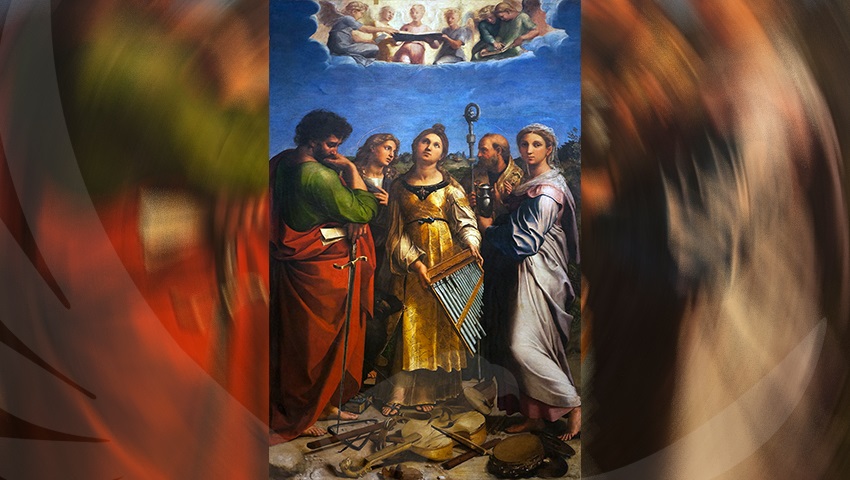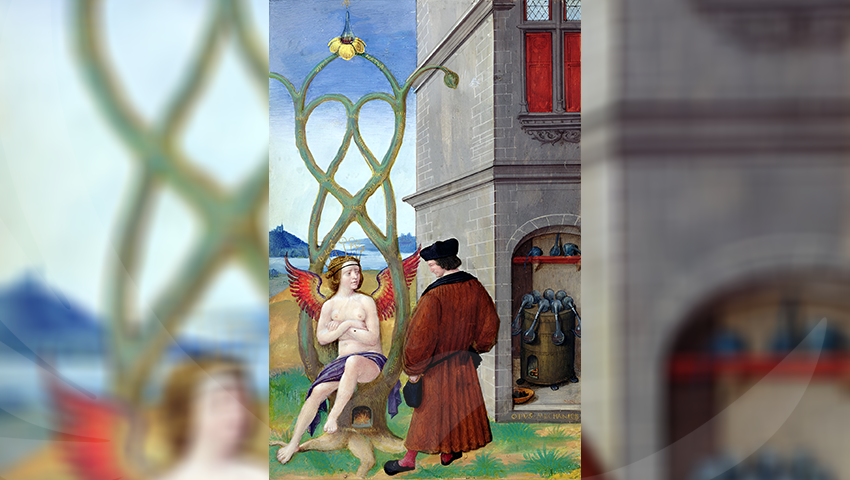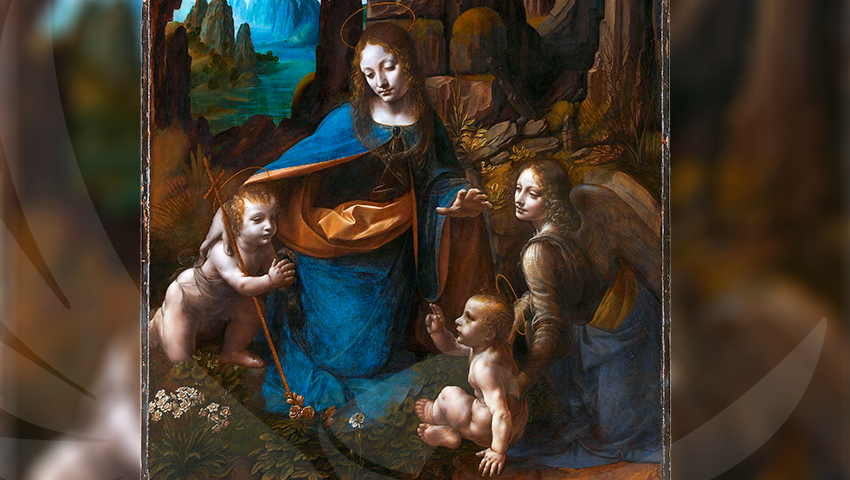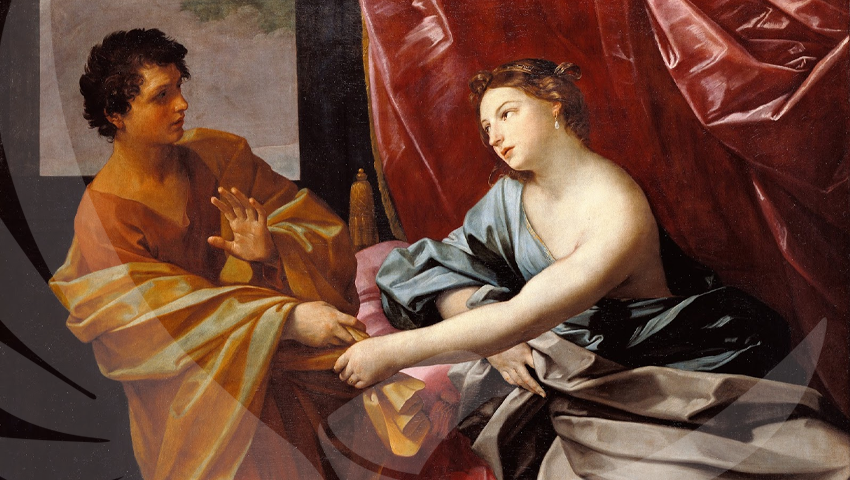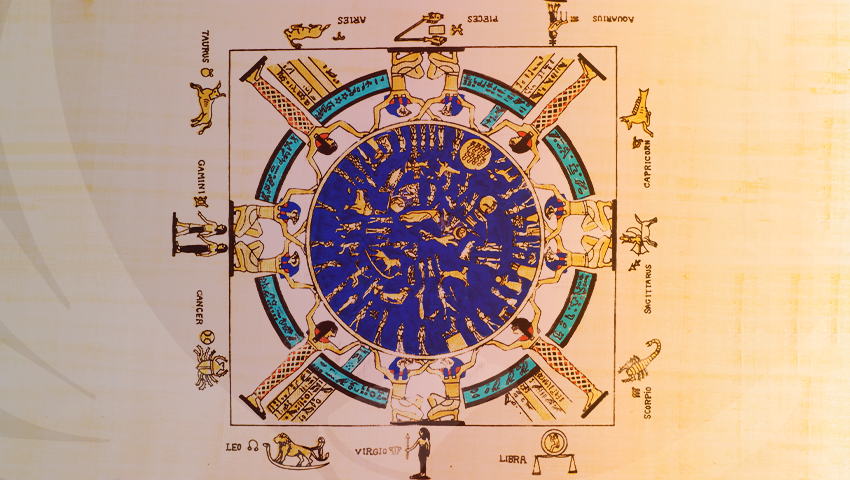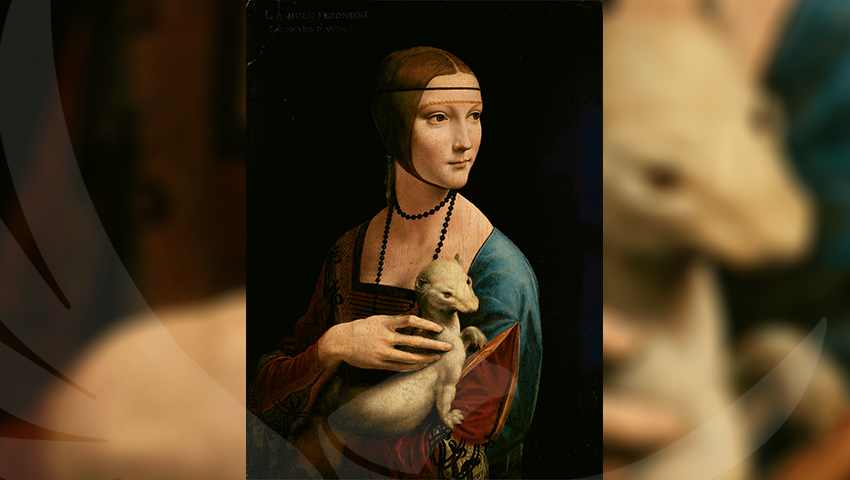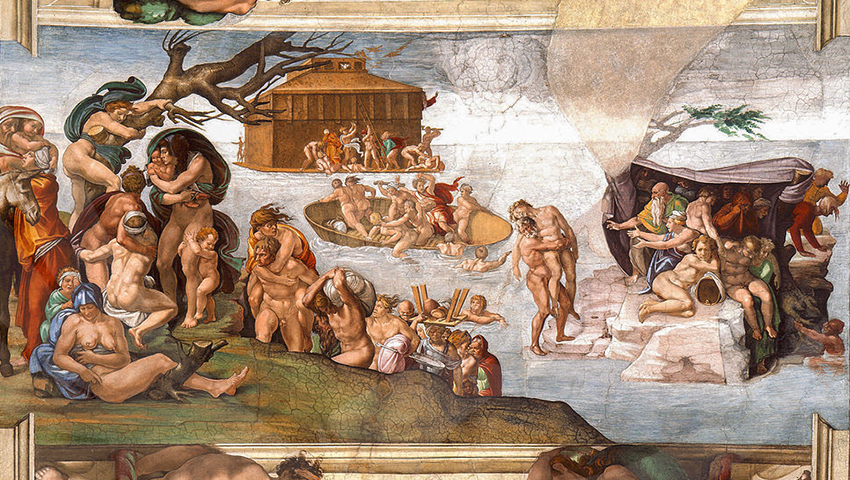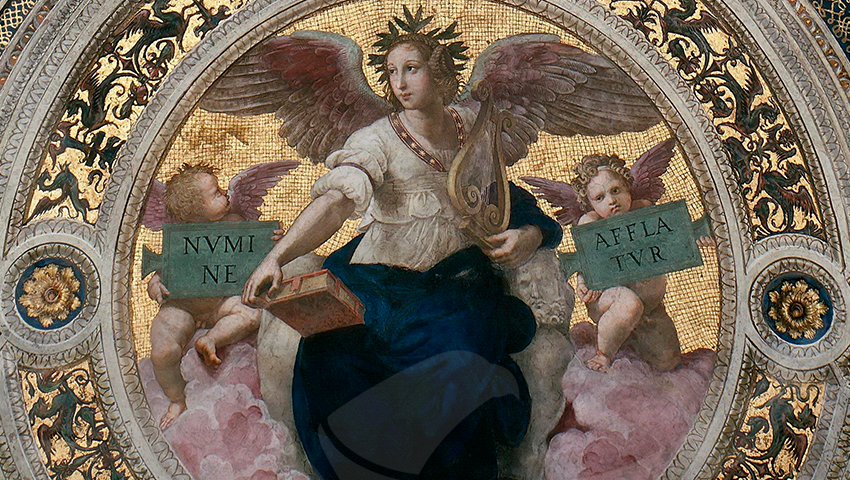Dearest friends:
I would like to send you this artistic work created between 1483 and 1520 by the Italian artist and architect named Raffaello Sanzio. The title it bears is…
…THE ECSTASY OF SAINT CECILIA
Entering our subject, we will begin by saying that this work is in the National Art Gallery of Bologna, in Italy.
Historians tell us the following:
“Cecilia of Rome, better known as Saint Cecilia, was a Roman noblewoman converted to Christianity and martyred for her faith on an undetermined date, between the years 180 and 350. She is considered patroness of sacred music and in honor of her an important movement of renewal of sacred music of the late nineteenth century received the name of Cecilianism. Her attributes are the organ, the lute and the roses.
In the book Martyrologium hieronymianum it is mentioned: “Appiâ viâ in eâdem urbe Româ natale et passio sánctæ Cecíliæ virginia”, ‘On the Appian Way of the city of Rome the virgin Saint Cecilia was born and died'”.
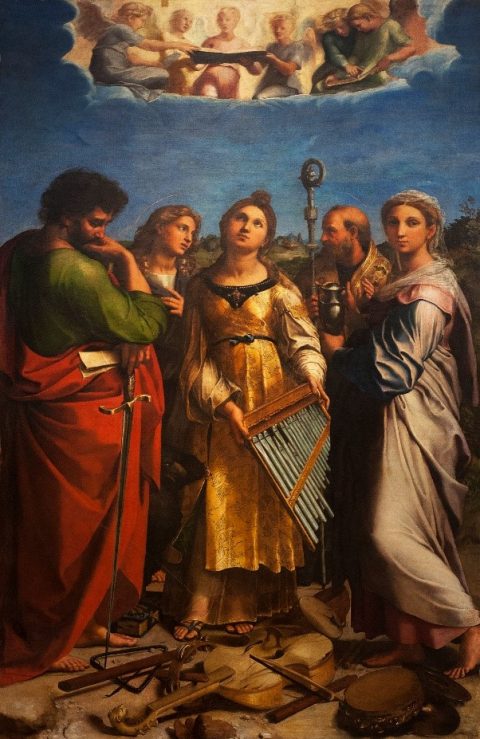
The painting shows us Saint Cecilia, dressed in a beautiful golden robe, raising her eyes to the sky and holding an organ in her hands. The organ was a highly revered musical instrument during the Middle Ages and the Renaissance because the music that this instrument emits is very spiritual.
On her right is John the Evangelist. Let us not forget that John represents the revelatory Word.
Then we see an eagle sitting on a closed book, which tells us that only by divine inspiration can the sacred books be interpreted. Such inspiration is indicated by the eagle.
Next to it we see the Apostle Saint Paul leaning on the sword, contemplating the musical instruments that lie at his feet. The violin is noticeably without strings.
On the left we see Augustine of Hippo with his crosier ─354-430─, first important philosopher of the Christian era, bishop of Hippo ─a city of present-day Algeria─ during the last years of the Roman Empire.
Finally, we see Mary Magdalene holding an alabaster jar. The fact that Mary Magdalene is present in this pictorial representation is to indicate that all the members of this work were aware of the transmutatory Ars or the secret that the Arcanum A.Z.F. encloses.
On the other hand, it is good to note that the simple belt of Saint Cecilia was a traditional Renaissance symbol of chastity.
In the upper part of this artistic representation we can see angels appearing like children, who are being the inspiration perceived by Saint Cecilia to elaborate her sacred songs and her mystical musical interpretations.
Allow me now to add some sentences that deserve our reflection:
“Religious tradition is the diamond axis on which our past revolves.”
Becquer
“The true filial duty consists in successfully carrying out the labors that our fathers did not complete, and in transmitting their conquests to posterity.”
Confucius
“Tradition, better than all ceremonial treatises and the code of fashionable usages, indicates the way to accommodate oneself according to the circumstances. Only tradition is not acquired.”
Ruben Dario
“True progressive men are those who on the outset have a deep respect for the past.”
Renan
“The easiest person to deceive and betray is oneself.”
Lytton
CONDITIO SINE QUA NON.
─’Condition without which nothing is possible’─.
KWEN KHAN KHU





